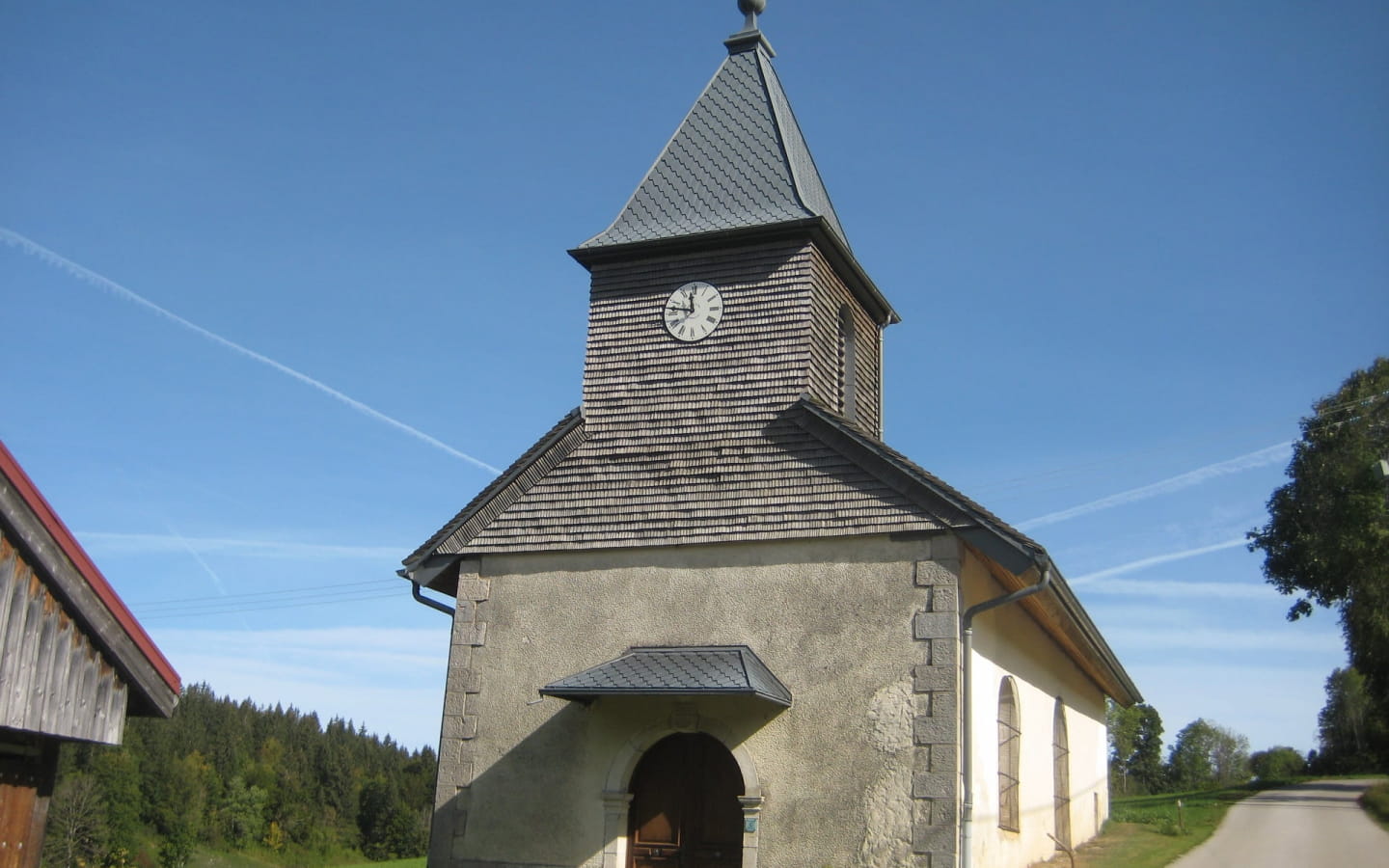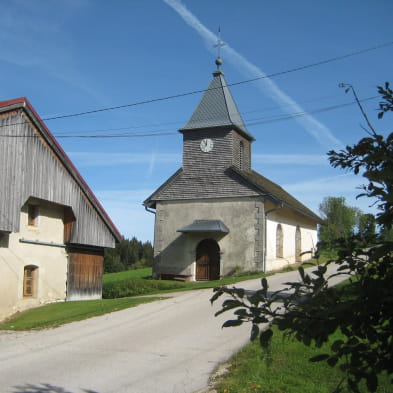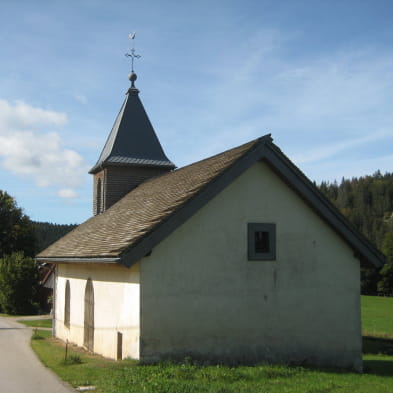
Chapelle Mijoux
Today, Jaunotte makes us discover the Saint-Claude Chapel (Mijoux Chapel) in the commune of La Cluse-et-Mijoux.
The Mijoux chapel was built in 1705, and this chapel is dedicated to Saint-Claude (like the church of Vuillecin, Jaunotte's village!).
At that time, the hamlet was called "Les Gagelins" and the chapel "la Chapelle des Gagelins". The latter was founded, endowed and decorated by Claude Belot de la Vilette, canon and high cantor of the Besançon metropolitan church, which owned many hamlets. The inhabitants, as is often the case, provided the materials, and Messire Belot de la Vilette paid the labour. The bell was cast and installed in the bell tower. Its weight? 300 pounds (about 140 kilos)!
Messire Belot de la Vilette advanced the costs and paid 50 pounds for his part. He was the godfather, and Huguette ROBBE (woman Fornage) the godmother.
In 174,3 a request is addressed to the archbishop so that the masses of foundation are said on Sundays and feast days. Indeed, the inhabitants of Chapelle-Mijoux are parishioners of Saint-Pierre de la Cluse, and during the winter months, the old and infirm, the pregnant women and the children cannot go there because of the snow and the overflowing of the brook. Authorization was given for them to have mass, and even religious instruction on Sundays and holidays (but only in winter).
The bell is broken in 1744, but a new one will be melted which weighs 400 pounds (approximately 400kilos). Its godfather was François Belot de la Vilette, nephew of the canon, and its godmother was Miss Danielle Gagelin, wife of Pierre Antoine Richard, cavalier de maréchaussée and sister of Sieur Claude Gagelin.
For the decoration of the chapel, the canon gives 5 paintings marked with his coat of arms, a silver chalice, a chasuble in red damask with a cross of a silver cloth trimmed with a yellow filoselle braid, a black chasuble trimmed with a white filoselle braid pierced with daylight "very cleanly", an assorted alb, an old Roman missal and two very light tin candlesticks of about twelve inches high (2.5 cm)
Claude GAGELIN, guard of honor of the duke of RANDAN, gave for the chapel a tabernacle covered with gold leaves (the altarpiece). Statues were also donated for the decoration (Saint Francis of Assisi, Saint Bonaventure, Saint John the Baptist, Saint John the Evangelist) and an Ecce Homo engraved on the door.
The chapel had a resident chaplain until 1820. The roof and the bell tower were restored in the 2010s.
Sources: Dictionaries of municipalities, ADD series G123, Frederic DELGRANDI (reproduction prohibited)









